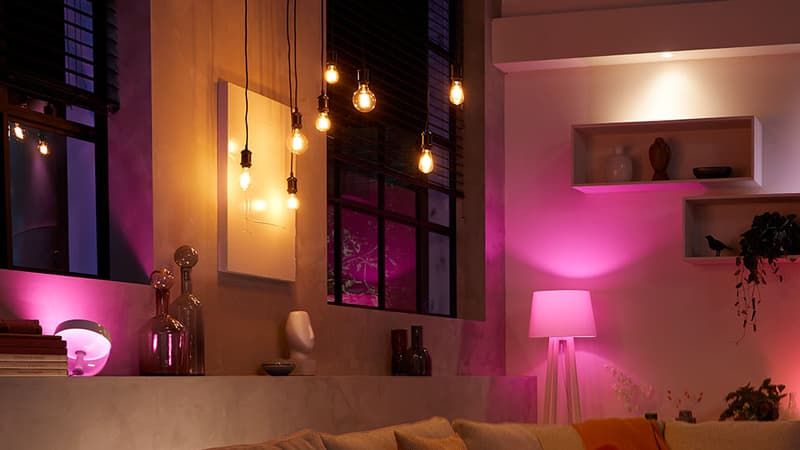Connected lighting to improve your daily life, automate your home to save energy and money. On paper, this looks promising. In the mind, it’s still not that simple or, at least, that attractive.
According to a study conducted by Ipsos*, 51% of respondents are even reluctant to adopt connected solutions when 17% have already taken the plunge. Only 23% say they are interested. Many still see the gadget side (28%) and don’t feel the need to swap out their lights for bulbs or tethered strips (26%). While 60% of the French plan to replace their lights with LED bulbs, only 11% are considering connected solutions. “But very few return once they start,” said Christophe Bresson, communications director at Signify, the group that owns the Philips Hue or Wiz brands.
Voice control before entertainment
For those who are already equipped or who would be tempted, the attractions are diverse: remote or voice control of lighting (33%), automation and routines (25%). Very practical uses that place well-being (19% are attracted to creating an atmosphere) and entertainment (11%) quite far. However, this could be an important help, particularly on the remote management or energy reduction side, in being good for the environment.
The study shows that 45% of the French say they are sensitive to the eco-responsibility of the product (energy category, durability, etc.), but there is still a significant proportion of people who admit to having forgotten to turn off the light when leaving. a room (11% and even 19% between 18-34 years). A problem that allows you to solve the control from your smartphone of your lights, even away from home.
A fashion phenomenon
But what emerges from the study is the practical aspect that is little perceived by the 2,000 people questioned. The advent of technology in lighting fails to fully seduce the majority who still see it as a passing fad and do not perceive the potential benefits, either at home or elsewhere.
The fear of embarking on complex works or installations also seems to make it difficult to generalize. “The technologies are scary, the words that accompany them too,” acknowledges Anne-Marie Simonetti, project manager at the French Energy Agency. “There is a need for education. However, there are solutions without having to modify your electrical installation, through applications. Voice control is a real help for people who are less comfortable with digital technology.”
Yet 63% of French people dream of a smart home where everything is made simple with a gesture or voice (Rothelec survey on the connected home, November 2022). Many hopes of generalizing lighting and home automation rest on Matter, which should allow standardizing installations and gateways to use any product with any system or voice assistant. But also in a need for users to understand that the interest of the connected goes beyond the simple incorporation of technology.
Lighting, the “poor relative” of comfort
“We must also inform about the benefits of light. We tend to forget that the right lighting at the right time is important for our well-being,” says Nadège Di Bernardo, interior designer at NDB Design. “The color temperature with more dynamic lights during the day to work at home and calmer in the afternoon to return to calm, adapted and well-oriented lighting according to the rooms are essential for our biological clock.”
And lament that lighting is the “poor relative of a moving or design budget.”
“We thought it would come from young people who are more sensitive to technology, but very few see light as a source of comfort in general, connected or not,” he regrets, however, stressing the virtues of automation, for example, lights following the rhythm circadian. the rhythm, the activity practiced or the room in which we find ourselves.
In general, the study points to the “consumable” aspect attributed to lighting by the French. 55% of those surveyed find it an advantage depending on the time of day or the task to be carried out, 35% focus on practical use. The idea of ”good lighting” rhymes above all with energy savings (69%), long useful life (55%) and eco-responsibility (49%). The design aspect or visual comfort that good lighting ensures obtains less than half of the votes, being higher among those over 55 years of age (43%).
* Ipsos study conducted online through the Ipsos.Digital platform from December 9 to 13, 2022 among 2,000 people aged 18 to 75.
Source: BFM TV


